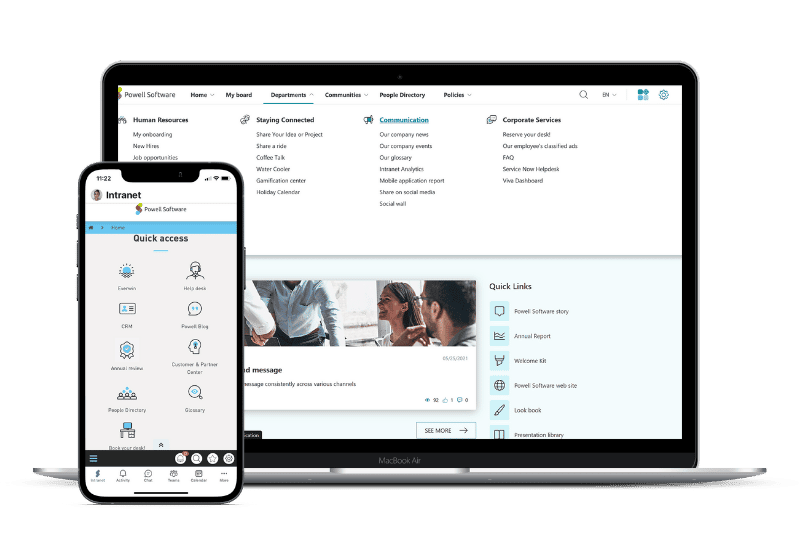
Are you tired of navigating a cluttered, outdated intranet?
Your intranet is more than just a place to store documents; it's a digital hub that can drive employee engagement, productivity, and overall company success. But with so many options available, choosing the right intranet solution can be overwhelming.
In this kit, we're comparing and contrasting the Powell Intranet and SharePoint out-of-the-box. Whether you're considering a do-it-yourself approach or looking for a pre-built solution, we'll help you make an informed decision.
Discover the key features internal communications managers love about Powell Intranet, and learn how to deploy your intranet on SharePoint or an external platform. By the end of this kit, you'll have the knowledge and confidence to create an intranet that truly empowers your employees and drives your business forward.

WHO IS THIS KIT FOR?

Struggling to decide between building, buying, or leveraging SharePoint? This kit guides you through the process. We'll cover:
- Pros and cons of SharePoint out-of-the-box
- How to maximize your Microsoft 365 investment with Powell Intranet
- Cost considerations for building and maintaining an intranet
- Selecting the best solution for your specific needs and budget
By the end, you'll be ready to make an informed choice and boost your digital workplace.
Powell Intranet, Your Company Intranet Reimagined
Ready-to-use
Our cloud-based intranet solution is ready to use right out of the box, providing organizations with a range of tools and features to get started.
.png)
Customizable, scalable & open
Powell Intranet software is highly customizable and scalable, allowing organizations to tailor it to fit their specific needs and requirements.

Microsoft 365 services
Our intranet solution is built on Microsoft 365, giving organizations access to all the tools and features they need to stay connected, collaborate, and work efficiently.

Security & Compliance
Powell Intranet meets the highest enterprise-grade standards for data protection, with built-in security and compliance features to keep your organization’s information safe.
.png)
.png)


.png)
Don't wait, elevate your intranet today!
Download this free kit and take the first step towards a more connected, efficient, and engaged workplace.


/Clients/OPAA%20logo.png)
/Clients/Steelwave%20logo.png)
/Clients/Unesco-logo.png)
/Clients/Quest%20diagnostics%20logo.png)
/Clients/Crossfirst%20bank%20logo.png)